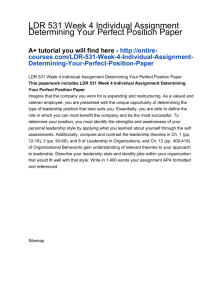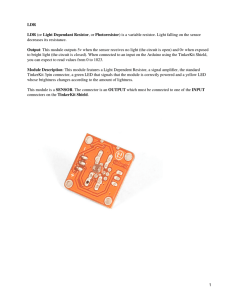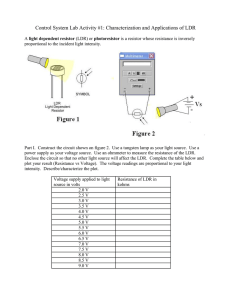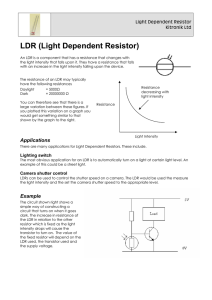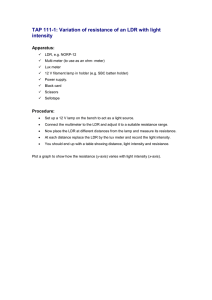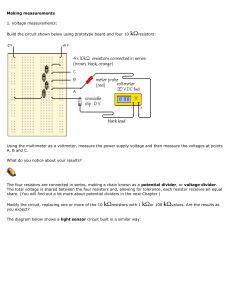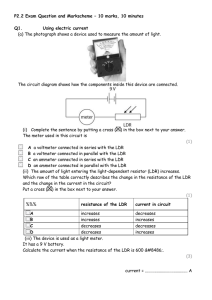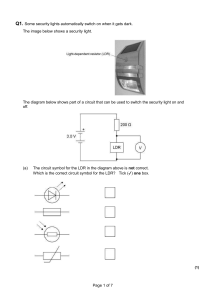CS 257 Lesson 2 Activity 4: Using Light-Dependent
advertisement
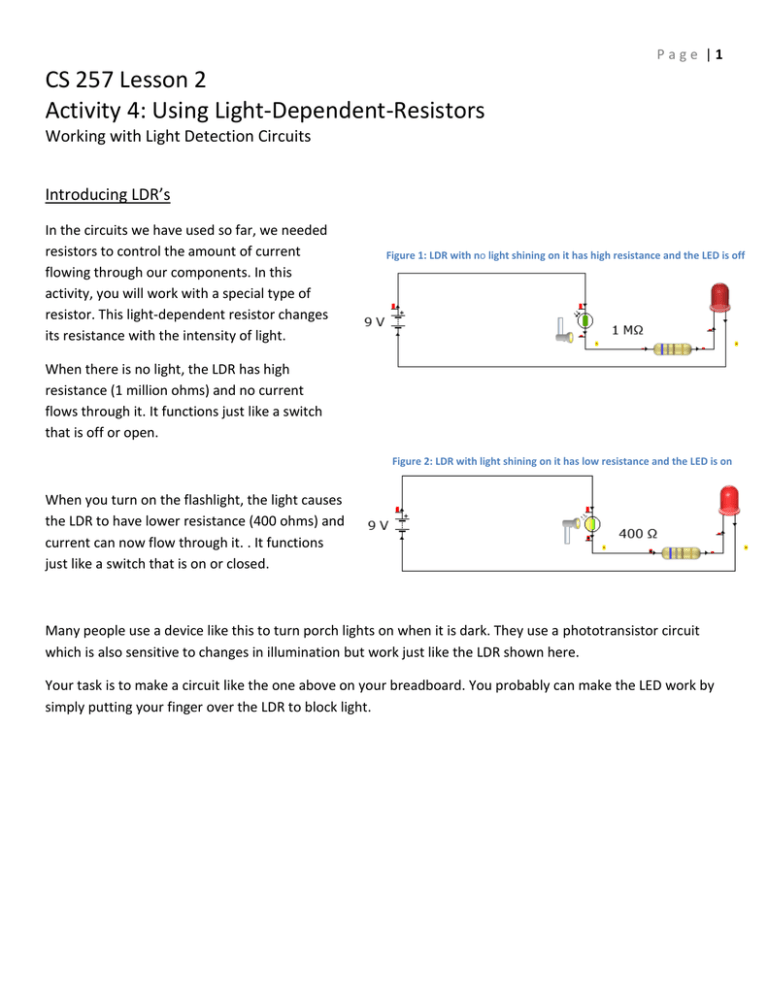
Page |1 CS 257 Lesson 2 Activity 4: Using Light-Dependent-Resistors Working with Light Detection Circuits Introducing LDR’s In the circuits we have used so far, we needed resistors to control the amount of current flowing through our components. In this activity, you will work with a special type of resistor. This light-dependent resistor changes its resistance with the intensity of light. Figure 1: LDR with no light shining on it has high resistance and the LED is off When there is no light, the LDR has high resistance (1 million ohms) and no current flows through it. It functions just like a switch that is off or open. Figure 2: LDR with light shining on it has low resistance and the LED is on When you turn on the flashlight, the light causes the LDR to have lower resistance (400 ohms) and current can now flow through it. . It functions just like a switch that is on or closed. Many people use a device like this to turn porch lights on when it is dark. They use a phototransistor circuit which is also sensitive to changes in illumination but work just like the LDR shown here. Your task is to make a circuit like the one above on your breadboard. You probably can make the LED work by simply putting your finger over the LDR to block light.
